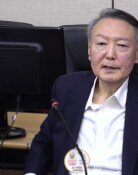Personal bankruptcy protection before Happiness Fund?
Personal bankruptcy protection before Happiness Fund?
Posted April. 08, 2013 08:23,
Ahead of an application period of Peoples Happiness Fund starting from April 22, law firms are keen on attracting customers, saying Individual bankruptcy protection is a relief measure that is more powerful than Peoples Happiness Fund. Some are staging a "last-minute marketing campaign" by unilaterally claiming that once application of Peoples Happiness Fund starts, it will be difficult to win approval for personal bankruptcy protection.
The number of applications for personal bankruptcy protection amounted to 16,862 cases in the first two months of this year, which showed a 23 percent surge year-on-year. It means that an average of 303 people applied for personal bankruptcy protection per day.
Since the launch of Peoples Happiness Fund, one of President Park Geun-hye`s campaign pledges, certain law firms specializing in personal bankruptcy protection and bankruptcy have posted advertisements suggesting personal bankruptcy protection is better than Peoples Happiness Fund" by comparing the two debt relief measures.
On an agonizing customer`s question asking which one is better between Peoples Happiness Fund and personal bankruptcy protection, one law firm said, Comparing with personal bankruptcy protection, Peoples Happiness Fund does not seem to have notable practical benefit. The other law firm said, As debtors should continue to pay the remaining debts even after benefiting from a 50 percent reduction in debt obligation through Peoples Happiness Fund, it is completely impossible for long-term delinquents who lack capacity to repay debts to overcome (the debt trap), stressing that personal bankruptcy protection is a better policy.
The Financial Services Commission pointed out that certain law firms are driving debtors to another pain by omitting its disadvantages when explaining about personal bankruptcy protection. With Peoples Happiness Fund, one can resume normal economic activities after two years, but with personal bankruptcy protection, one will remain on the list of people subject to financial supervision for five years, and thus face more restrictions in economic activities, a commission source said. Applying for assistance from Peoples Happiness Fund is a move to avoid disadvantages of personal bankruptcy protection.
Rumor has it that a debtor who disqualifies in review for Peoples Happiness Fund will not be entitled to personal bankruptcy protection. But this is not true, the commission source said. The ratio of debt indemnification is high with personal bankruptcy protection and this gives wider scope of debt reductions. But since disadvantageous information is kept in records for a longer period of time, debtors should carefully examine which program is more advantageous to them.
Personal bankruptcy protection reduces debts by up to 90 percent of the principal for up to 1 billion won (884,000 U.S. dollars) of collateralized debts, and up to 500 million won (442,000 dollars) of uncollateralized debts, irrespective of the duration of delinquency. Peoples Happiness Fund is limited to up to 100 million won (84,400 dollars) of debts that are in arrears for more than six months as of late February this year, and the ratio of debt reduction is up to 50 percent.
crystal@donga.com




![[단독]김경 “카페서 姜의 사무국장에 1억 줬다 돌려받아” 자술서](https://dimg.donga.com/c/138/175/90/1/wps/NEWS/IMAGE/2026/01/09/133128147.3.jpg)
![쓸개 파열로 “사흘 남았다” 판정받은 시인…18년뒤 “너를 아껴라” 속삭여[손효림의 베스트셀러 레시피]](https://dimg.donga.com/c/138/175/90/1/wps/NEWS/IMAGE/2026/01/08/133113134.1.jpg)

